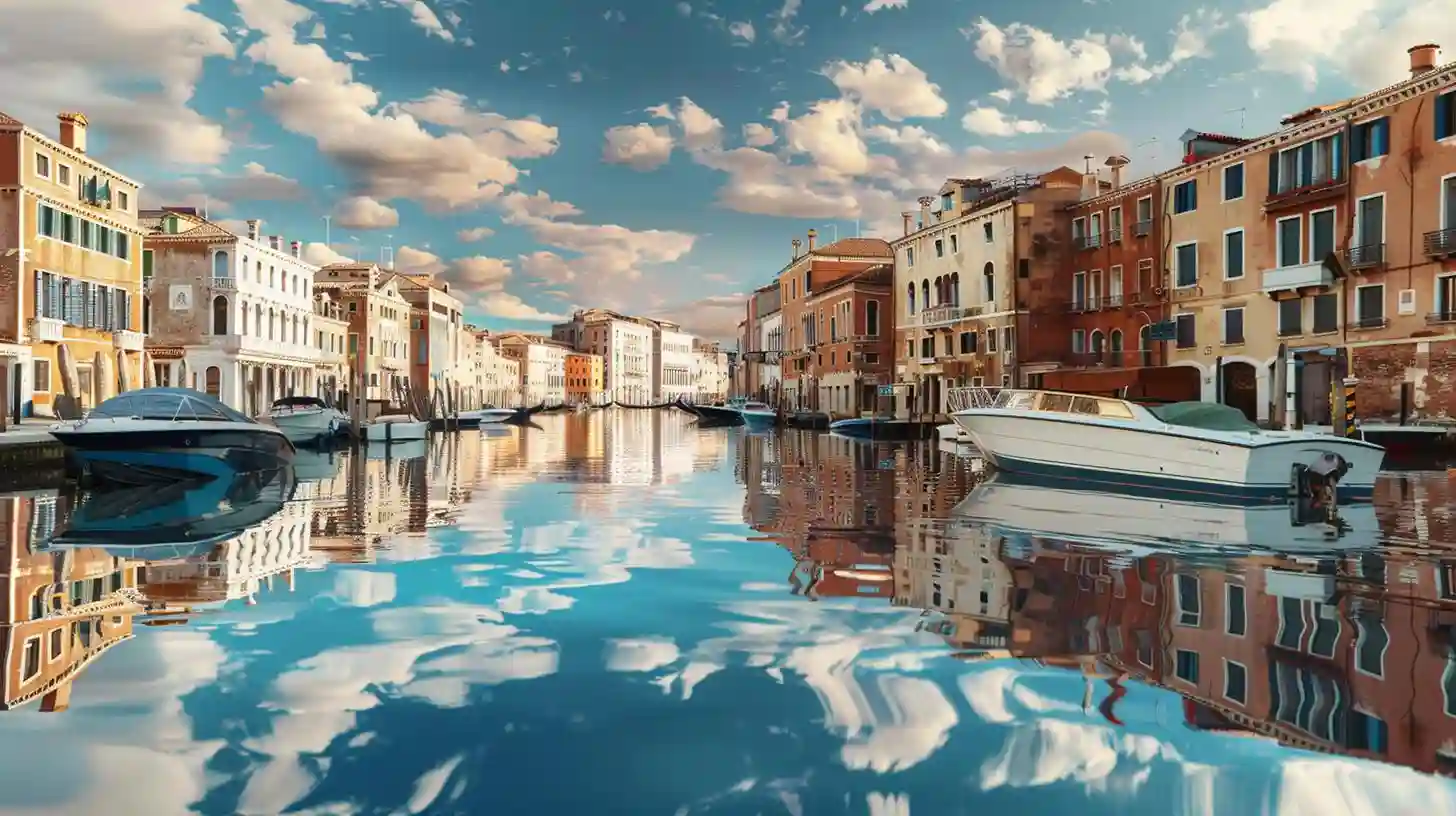
Venice, often referred to as the "City of Water," is an extraordinary marvel that effortlessly blends the allure of history with the charm of its aquatic surroundings. Founded over a millennium ago, this enchanting city is situated in the northeastern region of Italy, encompassing a network of 118 small islands separated by canals and linked by bridges. Venice serves as an epitome of architectural magnificence and artistic heritage. The city's unique geography and infrastructure, deeply interwoven with water, render it distinct from any other city globally.
The origins of Venice can be traced back to the migration of mainland populations fleeing from barbarian invasions. Its founders, constructing their new home amidst marshy islands, engineered an intricate web of canals and wooden pylons that supported the foundations of their new metropolis. This exceptional ingenuity not only laid the groundwork for what would ultimately become a thriving republic but also set the stage for the intriguing relationship between the Venetians and their surrounding waters.
The city's iconic element, its canals, forms the lifeblood of Venice, with the Grand Canal being the most significant. Acting as the main artery, the Grand Canal snakes through the city center in a reversed "S" shape, flanked by an array of splendid structures including palaces, churches, and merchant houses, most of which date back to the Renaissance and Baroque periods. These grandiose edifices evoke a sense of awe, reflecting the city's historical wealth and the opulence of its once powerful maritime republic.
Venice's waterways serve as the city's primary routes of transportation, bypassing the conventional road-based transit systems of other urban centers. The gondolas, with their sleek, black exteriors, are not only a symbol of Venice but also a nod to its storied past. Traditionally used by Venetian nobility, gondolas today transport tourists through the lagoons, providing them with a serene experience of the city's labyrinthine canals. The vaporetti, or water buses, offer more practical transportation for both locals and visitors, contributing to the seamless flow of daily life in this aquatic city.
The Piazza San Marco, the main public square of Venice, stands as the city's heart and a testament to its architectural splendor. The square is dominated by the majestic Basilica di San Marco, a gem of Byzantine architecture adorned with glistening mosaics and a treasury of relics. Adjacent to the basilica is the façade of the Palazzo Ducale, the Doge's Palace. This grand palace, with its elaborate Gothic detailing, housed the ruling Doge and the city's governing bodies during the Republic of Venice. The campanile, or bell tower, offers panoramic views of the Venetian lagoon, capturing the essence of the Venice's interplay with its waters.
The Venetian Carnival, an annual festival, encapsulates the artistic and cultural vibrance of Venice. During this time, the city transforms into a stage for lavish balls, masked parades, and theatrical performances. The Carnival’s history stretches back to the 12th century, when its elaborate costumes and masks allowed citizens a temporary escape from societal constraints and hierarchies. The masks themselves, with their ornate designs, are a quintessential symbol of Venetian craftsmanship and artistry.
Venice's relationship with the arts stretches far and wide. The city has inspired countless painters, writers, and composers who have captured its mystique and beauty through various media. Venetian Renaissance painters like Titian, Tintoretto, and Veronese infused their works with vivid color palettes and dramatic chiaroscuro, reflecting the interplay of light and water unique to Venice. Furthermore, the Teatro La Fenice, one of Italy's most famed opera houses, has showcased numerous world premieres and continues to be a cornerstone of Venetian cultural life.
However, Venice faces numerous contemporary challenges, primarily stemming from its watery environment. The Adriatic Sea’s rising levels, a consequence of climate change, have exacerbated the frequency and intensity of high tides known as "acqua alta." These tidal surges, flooding the city's streets and buildings, pose a significant threat to its architectural integrity and everyday functioning. The Venetian government has implemented measures like the MOSE project, a series of mobile barriers designed to protect the lagoon from excessive flooding. Yet, the balance between preservation and modernization remains a delicate endeavor.
Venice's economy heavily relies on tourism, but this dependency presents both benefits and drawbacks. While tourism injects significant revenue into the local economy, it also strains the city's infrastructure and alters its character. The influx of tourists has led to congestion, inflated prices, and the erosion of traditional lifestyles. Consequently, Venetians must navigate the paradox of maintaining their city’s allure while safeguarding its cultural authenticity and resident well-being.
The cuisine of Venice also holds a unique place in the city's cultural tapestry. Reflecting its maritime heritage, Venetian dishes incorporate an array of seafood, from clams and mussels to cuttlefish and octopus. Risotto al nero di seppia, a rice dish cooked with cuttlefish ink, is a local specialty that embodies the flavors of the lagoon. Moreover, cicchetti, Venetian-style tapas, offer a variety of small plates that are typically enjoyed at traditional bacari, local wine bars, fostering a communal dining experience intrinsic to Venetian social life.
In Venice, the facets of daily life are inextricably linked with the waterways. From the annual Regata Storica, a historic boat race that celebrates the city’s maritime prowess, to the practice of rowing a caorlina, a traditional six-oar boat, Venetians embrace their aquatic surroundings with a sense of pride and heritage. Moreover, the city’s artisans, from glassblowers in Murano to lace-makers in Burano, continue to perpetuate centuries-old crafts, intertwining their artistic endeavors with the cultural and economic milieu of Venice.
In light of its numerous historical, cultural, and environmental complexities, Venice remains an unparalleled symbol of resilience and ingenuity. The city's architecture, arts, and traditions resonate with the essence of water, reflecting a harmonious coexistence with the natural world. As Venice navigates the crossroads of contemporary challenges and future aspirations, it stands as a testament to human creativity and the enduring spirit of a city that rose from the waters and forged a legacy for the ages.